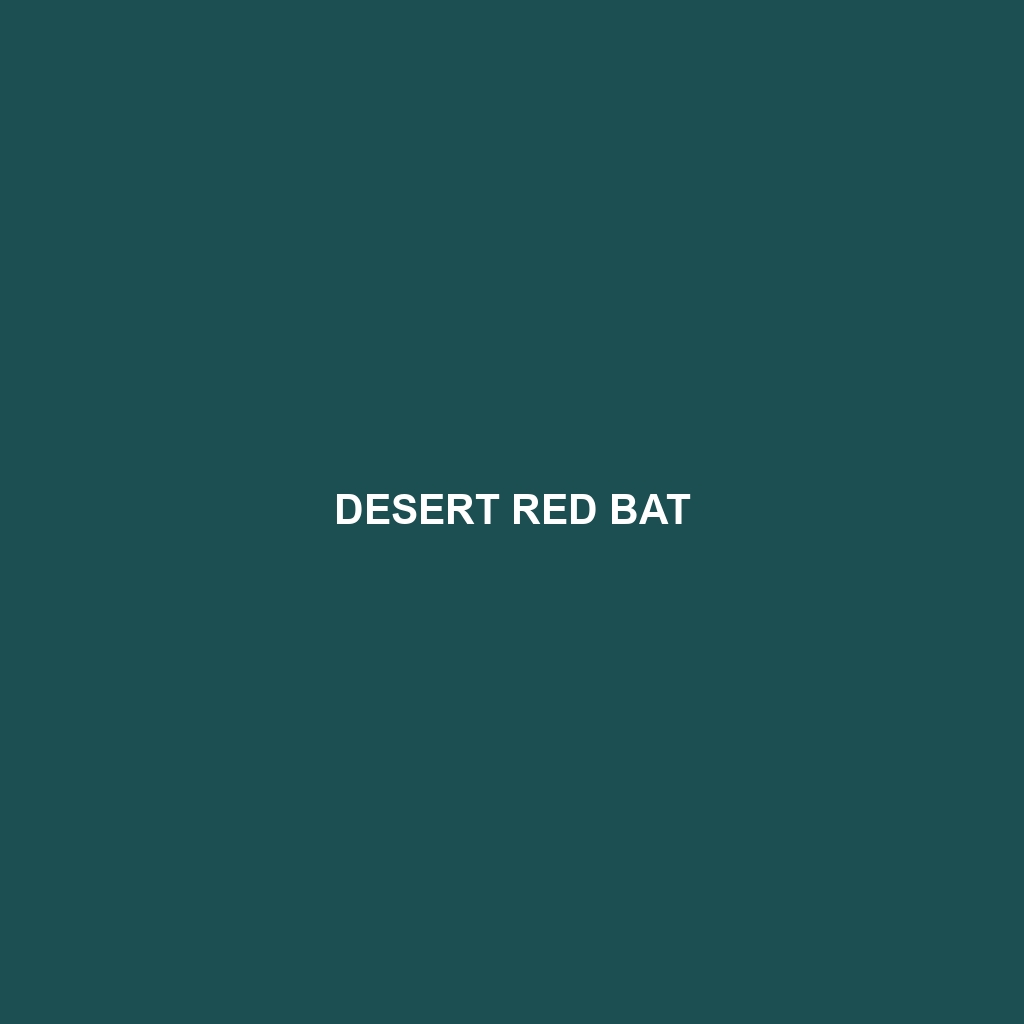Dhofar Pipistrelle
Common Name: Dhofar Pipistrelle
Scientific Name:
Habitat
The Dhofar Pipistrelle primarily inhabits arid and semi-arid regions of the Dhofar Governorate in Oman. This species is commonly found in rocky outcrops, caves, and areas with sparse vegetation, making it well-adapted to the unique geographical and environmental conditions of the southern Arabian Peninsula. The presence of sufficient roosting sites and proximity to water sources are crucial for their distribution.
Physical Characteristics
The Dhofar Pipistrelle is a small bat species, typically measuring between 4 to 6 inches in body length with a wingspan of about 10 to 12 inches. Its fur is dense and varies in color from brown to gray, with lighter underparts, which aids in camouflage against its rocky habitat. Distinctive features include its elongated ears and a short snout, contributing to its recognizing characteristics. The wing morphology allows for agile flight, essential for catching prey.
Behavior
Dhofar Pipistrelles exhibit nocturnal behavior, becoming active at dusk to hunt for insects. They are adept echolocators, using sophisticated sonar calls to navigate and locate food in the dark. Socially, these bats may roost in small colonies, providing warmth and protection from predators. Their flight patterns are characterized by rapid, agile maneuvers that allow them to evade threats and efficiently capture prey.
Diet
The diet of the Dhofar Pipistrelle mainly consists of small insects, particularly moths and beetles, which they skillfully hunt during flight. They are known to forage in a variety of locations, including near water bodies and open areas, adapting their feeding habits based on availability. This insectivorous diet is vital for maintaining ecological balance, and their feeding habits make them important predators of pest species.
Reproduction
Dhofar Pipistrelles typically breed during the warmer months, with females giving birth to one or two pups each season. The gestation period lasts approximately 45 to 50 days, after which the pups are born in protective roosts. Mothers display strong maternal behavior, nursing and caring for their young until they are capable of flight and independent foraging.
Conservation Status
The Dhofar Pipistrelle is currently classified as vulnerable due to habitat loss and degradation. Conservation efforts are essential to protect their roosting habitats and maintain ecological balance in the areas they inhabit. Protecting these bats involves promoting sustainable land use and safeguarding their natural environments from development and pollution.
Interesting Facts
The Dhofar Pipistrelle is notable for its specialized adaptations to desert environments, such as its ability to survive with limited water inputs. This species is also among the lesser-known bats in the Arabian Peninsula, making it a subject of intrigue for researchers and bat enthusiasts alike. Furthermore, their echolocation skills are among the most advanced of all bat species.
Role in Ecosystem
As insectivores, Dhofar Pipistrelles play a critical role in controlling insect populations, thereby maintaining ecological balance within their habitat. Their presence is indicative of a healthy ecosystem, and they contribute to the food web by providing sustenance for predators such as birds of prey. Additionally, by pollinating plants while foraging, they assist in the reproductive processes of various flora within their range.
